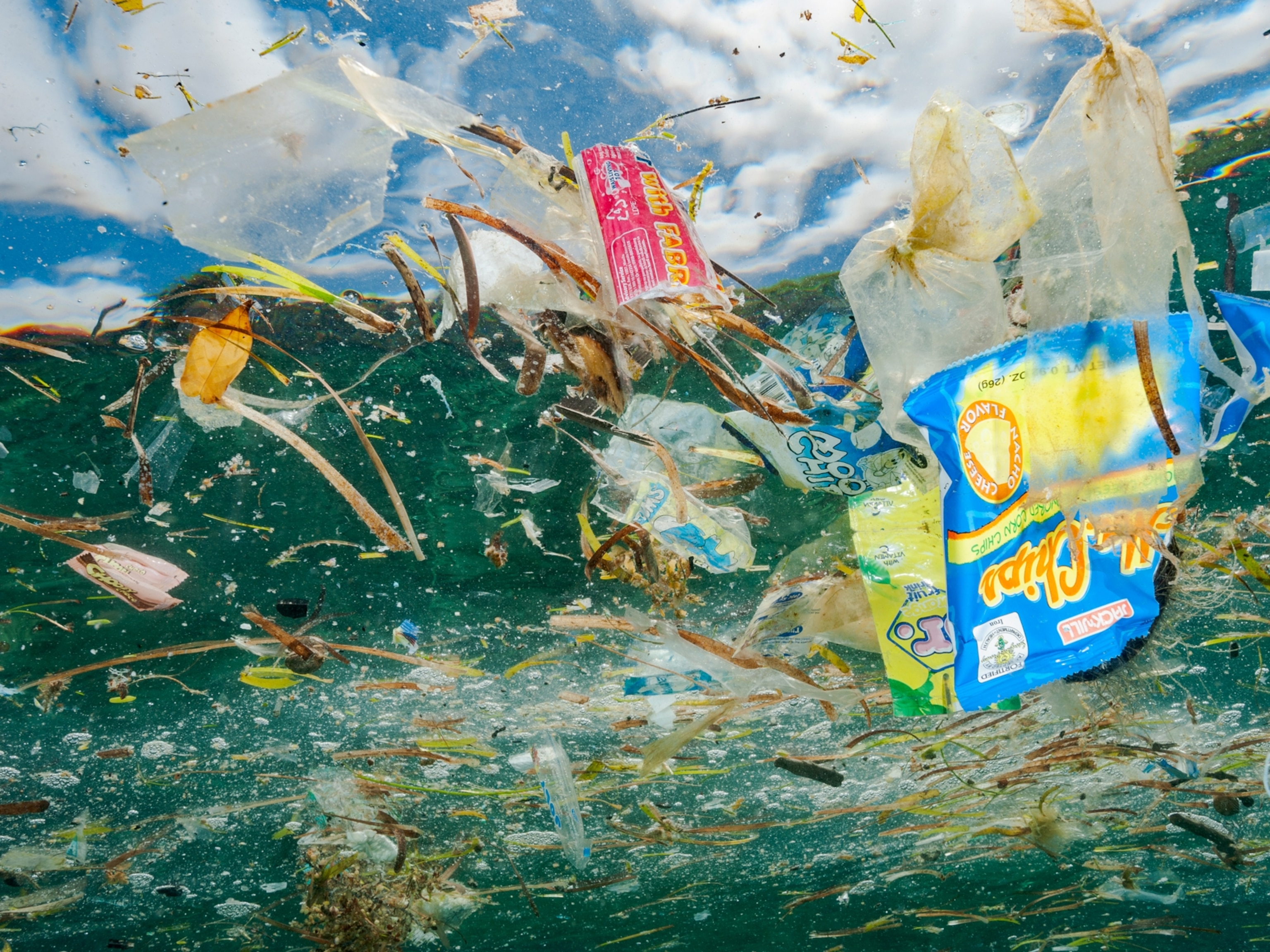Microplastics found to permeate the ocean’s deepest points
One liter of water from the Mariana Trench contains thousands of tiny plastic pieces, according to new research.
Like the food particles that clump together in the middle of a kitchen sink, plastic debris is gathering in the deepest reaches of the ocean.
A new study published in Geochemical Perspectives found evidence of microplastic (plastic smaller than five millimeters) gathering in large quantities in the deepest parts of the oceans, and that could account for “missing” plastic that has stumped scientists to date.
A team of researchers from the Chinese Academy of Science analyzed thirteen regions by looking at previous studies and collecting their own samples. Earlier this year, a plastic bag was found in the deepest reaches of the Mariana Trench, 36,000 feet below the surface. Researchers spotted it while using video to survey the region for plastic debris.
To better understand plastic that can't as easily be spotted, the Chinese researchers analyzed water samples and broke out the amount of microplastic they found in a single liter, about four cups.
In the trench's most polluted regions, they found as many as 2,000 pieces of microplastic in one liter. The only other deep sea region that topped the Mariana Trench was found at the Hausgarten Observatory, which sits in the Arctic Greenland Sea to the west of Svalbard. There, researchers sampled at depths of more than 18,000 feet and found as much as 3,400 pieces of microplastic in one liter.
The search for the ocean's missing plastic
A study published in 2014 estimated that nearly 99 percent of the ocean's plastic was unaccounted for. About 300 million tons of plastic is produced every year, but after a research vessel fished for plastic in five major gyres around the world, they found only about 40,000 tons. It's thought that much of that missing plastic is in the form of hard-to-fish microplastic and is possibly being eaten by sea creatures.
In fact, it's the sea creatures that may be helping microplastic sink to the bottom of the sea.
“Zooplankton ingest microplastic, and it sinks with their poo,” says Alina Wieczorek, a marine biologist from the National University of Ireland. Earlier this year, Wieczorek published research finding an abundance of microplastic in deep-sea fish.
Of the 11 types of plastic looked at in the study, only two were found to be buoyant. The other nine all eventually sink. Researchers observed plastics that were blue, red, white, green, and purple. They ranged in shape from round to rods. Small pieces of microplastic that are covered in biofilm—thin layers of bacteria, plankton, and other small organisms—also eventually sink to the bottom of the ocean.
What's the impact on deep-sea wildlife?
“To reconstruct the pressure from deep-sea environments is quite impossible,” says Wieczorek.
Deep-sea research is among the most difficult and expensive to perform. Wieczorek says much of what biologists know about the impact of microplastics in sea creatures is inferred from studying species at shallower depths.
Previous studies have shown that sea creatures may be likely to consume microplastic because it looks or smells like food, but microplastic often accumulates toxins in the water. Large, long-living marine mammals consume an abundance of smaller fish over time, leading them to accumulate plastic.
Everything from feeding to hunting and mating behaviors can be impacted. Large whales have been found beached with 17 pounds of plastic inside of them.
While scientists are starting to understand how microplastics will alter shallow ecosystems, the deep sea is by far less well understood.
“The hadal zone [deepest part of the ocean] could be one of the largest microplastic sinks on Earth,” the study concludes, adding that the impacts of storing the world's plastic are largely still unknown.





